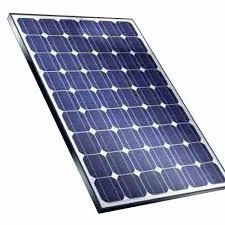size of 60 cell solar panel
Understanding the Size of 60 Cell Solar Panels
As the world turns towards renewable energy sources to combat climate change, solar power has emerged as a leading contender. Among the various types of solar panels available, the 60 cell solar panel has gained considerable popularity. This article delves into the dimensions, advantages, and applications of 60 cell solar panels, shedding light on their role in solar energy systems.
What are 60 Cell Solar Panels?
A 60 cell solar panel typically consists of 60 individual photovoltaic (PV) cells, each responsible for converting sunlight into electricity. These cells are usually made of crystalline silicon, which exhibits high efficiency and durability. The configuration of 60 cells results in a panel that is approximately 1.6 meters (about 65 inches) long and 1 meter (about 39 inches) wide. This size makes 60 cell solar panels a versatile option for residential and commercial applications.
Dimensions and Specifications
The standard dimensions of a 60 cell solar panel allow for easy installation on rooftops as well as in ground-mounted systems. Weighing around 17-20 kilograms (37-44 pounds), these panels are not overly cumbersome, allowing for straightforward handling and installation. Typically, a 60 cell panel has a power output ranging from 250 to 350 watts, depending on its efficiency and the technology used. Most manufacturers offer panels with an efficiency rating between 15% and 20%, meaning they can convert this percentage of sunlight into usable electricity.
Advantages of 60 Cell Solar Panels
1. Optimal Size for Residential Use The size of 60 cell solar panels strikes a balance between power output and physical dimensions, making them ideal for most residential rooftops. Homeowners can easily install several panels to meet their energy needs without requiring a vast amount of space.
size of 60 cell solar panel

2. Cost-Effectiveness When compared to larger panels, 60 cell solar panels generally offer a lower cost per watt, making them an attractive option for first-time solar buyers. The initial investment can significantly reduce electricity bills over time, allowing homeowners to achieve energy independence.
3. Well-Suited for Various Applications Beyond residential rooftops, 60 cell panels can be used in commercial setups, off-grid systems, and even in portable solar applications. Their flexibility makes them a popular choice among both homeowners and businesses looking for reliable solar solutions.
4. Established Technology Being one of the most common types of solar panels, 60 cell models have been tested extensively in various conditions. This well-established technology offers reliability and performance assurance for prospective buyers.
Installation and Maintenance
Installing a 60 cell solar panel system generally involves mounting the panels onto a rooftop or ground structure, connecting the panels to an inverter, and hooking up the inverter to the electrical grid or battery storage. Professional installation is often recommended to ensure safety and compliance with local regulations.
Maintenance for 60 cell solar panels is relatively low. Regular inspections to remove debris, leaves, or snow can enhance efficiency, while periodic checks of electrical connections and inverter performance will ensure optimal functioning. Most manufacturers provide warranties ranging from 10 to 25 years, ensuring long-term reliability and performance.
Conclusion
In conclusion, the 60 cell solar panel stands out as a practical, efficient, and versatile option in the realm of solar energy systems. Its size makes it suitable for various applications, particularly in residential settings. As interest in renewable energy continues to grow, understanding the specifications and benefits of different solar panel types, including the 60 cell model, becomes increasingly critical. This knowledge empowers individuals and businesses to make informed decisions in their pursuit of sustainable energy solutions. By adopting solar technology, we move one step closer to a cleaner and greener future.
-
Unlocking Energy Freedom with the Off Grid Solar InverterNewsJun.06,2025
-
Unlock More Solar Power with a High-Efficiency Bifacial Solar PanelNewsJun.06,2025
-
Power Your Future with High-Efficiency Monocrystalline Solar PanelsNewsJun.06,2025
-
Next-Gen Solar Power Starts with Micro Solar InvertersNewsJun.06,2025
-
Harnessing Peak Efficiency with the On Grid Solar InverterNewsJun.06,2025
-
Discover Unmatched Efficiency with the Latest String Solar InverterNewsJun.06,2025







